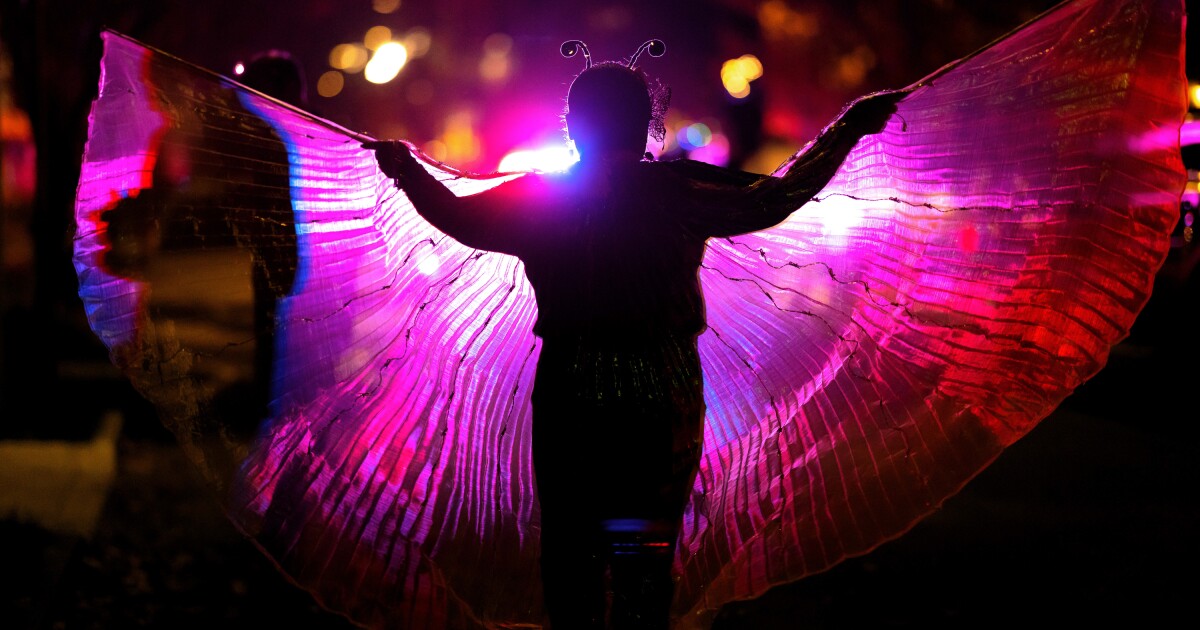Day of the Dead, or Día de los Muertos, is a tradition passed down through generations. A day meant not to mourn the dead, but to remember and celebrate their lives.
In certain Latin American cultures it is believed that for one day, the barrier between the living and the dead is lifted, allowing families to spend time together and honor their ancestors.
The holiday, often full of colorful displays, will be marked with a giant puppet parade and festival on Saturday afternoon at the Bregamos theater in New Haven.
Pedro Lopez Barrios, an artist from Jocotenango, Guatemala, said every year, he participates in the Mesoamerican Día de los Muertos parade organized by the advocacy group Unidad Latina en Accion.
As someone who deeply values his cultural heritage, Lopez Barrios creates papalotes, kites in the shape of humans and animals, to welcome the spirits of the dead back to Earth. He also makes other art pieces that are significant for this special celebration.
“We commemorate our deceased and those who have transcended,” Lopez Barrios said. “We try to show the worldview of our people through the symbolism of the skeletons and how we see death not as a tragedy, but as a step from the material to the spiritual energy.”
The parade follows Mexican tradition, he said, because it is the most widely known.
Nayeli Garcia, who has Mexican origins, is the event coordinator at Unidad Latina en Accion. She said the tradition of Día de los Muertos is deeply rooted in Mexican culture and passed down from generation to generation.
This holiday is meant to celebrate and remember the lives of those who have died, she says, by leaving them gifts.
“Offerings are made from the third week of October,” Garcia said. “We believe that our deceased return home during those days, and we offer them what they liked, such as their favorite dishes, sweets, and drinks.”
The day is a beautiful and emotional experience, Garcia says, and a reminder that love and memories never die.
Garcia says Mexicans also honor their deceased loved ones by creating a path of cempasuchil, a marigold also known as the “flor de muerto” or “flower of the dead,” leading from their front doors to their living rooms. Cempasuchil is a flower that has been used since before Spanish colonists came to Mexico and is linked to honoring and respecting death.
“At noon, I open the door of my house, and I make a path with flowers to where my grandparents’ altar is,” Garcia said. At the center of their living room, they built an altar, which is adorned with pictures of their loved ones, candles, fruits, sweets, and their favorite dishes.
“While I do that, I call my deceased grandparents, and say ‘Welcome back home. It’s good that you’re back.’ Then I light the candles, pray, and sit there with them for a while,” she said.
Both Garcia and Lopez Barrios believe that Halloween and Día de los Muertos are distinct holidays that should be respected for their unique cultural significance. They advocate for individuals to learn about and appreciate the traditions and customs of other countries.
“The lack of respect for our culture is when profit is made,” Pedro said. “I have seen that the decorative chain paper, our representation of the skeletons and the catrinas are made in China. None of that money will ever reach our communities.”
Catrinas are elegant skeletons that have become a popular costume on the holiday, but La Catrina originated as a political cartoon poking fun at European colonial influence over Indigenous Mesoamerican women.
The annual celebration of Día de los Muertos will be held at the Bregamos theater this Saturday, Nov. 4, at 4 p.m., with a parade starting at 6 p.m. The event is family-friendly, with activities such as catrina face painting, sweet treats, lively music and traditional food.
Organizers say it is an opportunity to not only enjoy the festivities, but also to gain a deeper understanding and appreciation for the Mexican heritage and its rich cultural traditions. Visitors are encouraged to participate by bringing photos of their own dead loved ones to place on the community altar.

